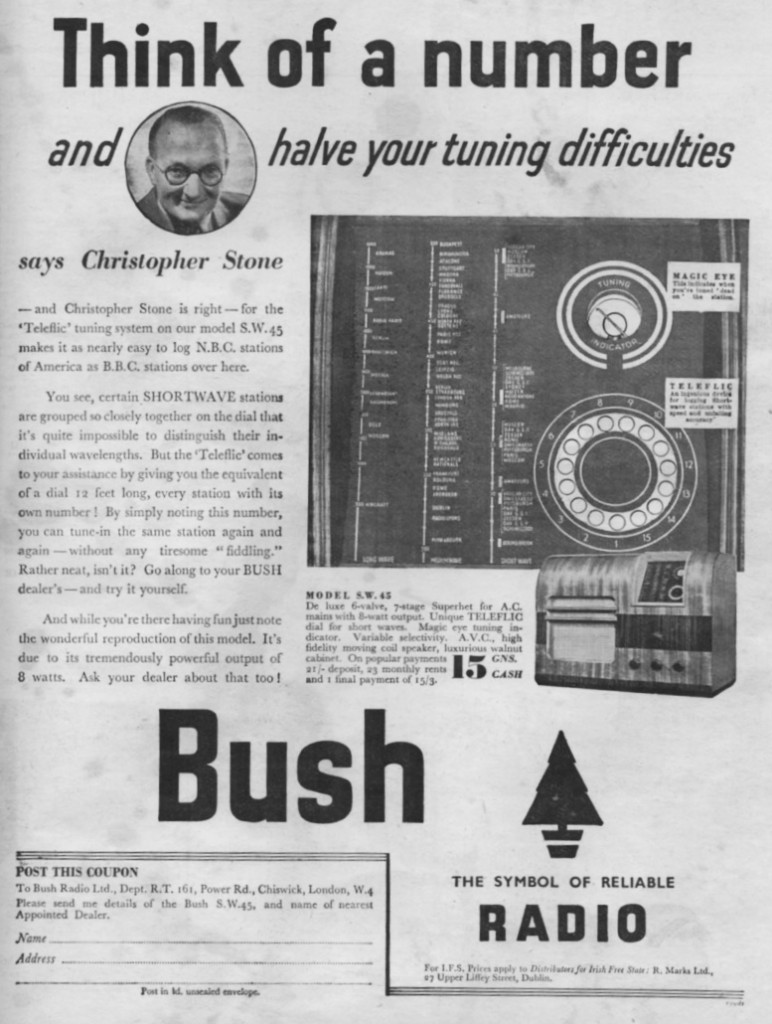Many thanks to SWLing Post contributor, Christopher Brennen, who shares this retro advert (above) from Retropia.
I’m very curious what it must have been like to tune the Bush S.W.45. Seems the big selling feature was its ability to reliably tune closely-spaced stations. The ad claims:
“[T]he Teleflic comes to your assistance by giving you the equivalent of a dial 12 feet long, every station with its own number!”
I’m sure this was a brilliant innovation at the time.
I found this image of a fully-restored S.W.45 in an album by Photobucket user Retired2000:
http://i1085.photobucket.com/albums/j436/retired2000/Vintage%20Bush%20SW45%20radio/Fullyrestored.jpg
Indeed, he did an amazing job restoring this radio–check out the full album here.
I love the S.W.45’s dial. From a distance, the graphics almost look like sci-fi–like a panel on the star ship Enterprise.
Thanks again, Christopher!


It’s interesting how everyone has something to say about that “device” based on what they misinterpret from a blurry BW image. The Teleflic is NOT a phone dial disk, it’s just a “log scale” made of lamps arranged in a circle, with a supposedly higher resolution than a regular linear log scale. You would read a letter off the main scale and the number off the Teleflic, then jot that down to memorize “F 14 = Radio XYZ” like with any other log scale too.
Ha! As usual! Germans did it first!
http://www.radiomuseum.org/forum/hagenuk_nordmark_super_wir_fuehren_vor.html
Dialing a two digit number elected special capacitors.
On the bottom of the page you can download the wiring diagram.
Beautiful piece of craftsmanship. Makes me long for those days where art and function were not considered separate entities. Of course bacon was sold in 1-lb packages back then, and ice cream was sold in 1/2 gallon containers. Those days too, alas, are gone!
I like the user interface. A rotary phone dial. Maybe someone will make SW set that you literally “dial-up” the frequency you want to listen to.
A beautiful radio with a wood veneer cabinet way past the ordinary. Tuning eye tube. Telephone dial. Wow.
I want know how the telephone dial tuning mechanism worked. I suspect that this was not a dial-a-frequency proposition. The phone dial probably set up an approximate frequency from which the actual frequency was fine-tuned.
State of the art communications receivers from the USA during the late 1930’s included the more functionally designed Hammarlund SP-200 series. I doubt that this blingy Bush consumer radio from the UK would perform better. It sure wins points for whiz-bang design consideration, though.